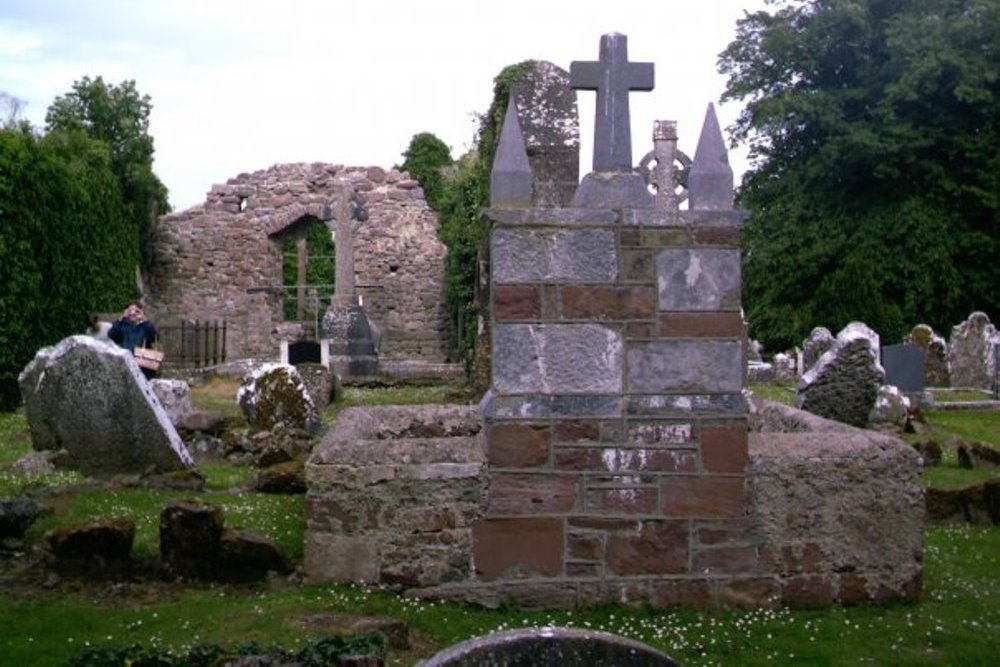
march 2025
SYNODS OF THE EARLY IRISH CHURCH
Written by: D.P. Curtin
Synod of Patrick, Auxilius, & Iserninius - 5th century, presided over by St. Patrick, Bishop of Ireland Synod of Valentia Island- 5th century, presided over by St. Caillin, Abbot of Fenaugh Synod of Tailtiu (Teltown)- 562 AD, presided over by Domnall Ilchelgach, High King of Ireland 1st Synod of Drum Cett- 575 AD, presided over by St. Comgall, Abbot of Bangor 1st Synod of Ballysadare- 575 AD, presided over by St. Muiredach, Bishop of Killala 2nd Synod of Dum Cett- 584 AD, presided over by St. Comgall, Abbot of Bangor Synod of Old Leighlin (Mag Lena)- 630 AD, presided over by St. Ailbe, Bishop of Emly 1st Synod of Armagh- 634 AD. presided over by Tomene, Abbot of Armagh Synod of Fore Abbey- 7th century, presided over by St. Fechin, Abbot of Fore 1st Synod of Tara- 692 AD, presided over by St. Adomnan, Abbot of Iona 1st Synod of Birr - 697 AD, presided over by St. Adomnan, Abbot of Iona 2nd Synod of Tara - 697 AD, presided over by Flan, Archbishop of Armagh 3rd Synod of Tara - 780 AD, presided over by St. Dublitter, Abbot of Armagh (?) 4th Synod of Tara- 804 AD, presided over by Condmach, Abbot of Armagh 2nd Synod of Armagh - 807 AD, presided over by Torbach, Abbot of Armagh Synod of Inis Aingin- 899 AD, presided over by Cairbre Crom, Abbot of Clonmacnoise Synod of Killaloe- 1050 AD, presided over by Donnchad O’Brien, King of Munster 1st Synod of Dublin- 1084 AD, presided over by Toirdelbach O’Brien, High King of Ireland 1st Synod of Waterford- 1097 AD, presided over by Muirchertach O’Brien, High King of Ireland 1st Synod of Cashel- 1101 AD, presided over by Muirchertach O’Brien, High King of Ireland Synod of Rath Bressail- 1111 AD, presided over by Muirchertach O’Brien, High King of Ireland Synod of Uisneach- 1112 AD, presided over by Muirchertach O’Brien, High King of Ireland 2nd Synod of Ballysadare- 1134 AD, Unknown leadership Synod of Inis Padraig- 1148 AD, presided over by St. Malachy, Archbishop of Armagh Synod of Kells-Mellifont- 1152 AD, presided over by John Cardinal Paparo, Papal Legate Synod of Mellifont-Drogheda- 1157 AD, presided over by Muirchertach Mac Lochlainn, High King of Ireland Synod of Bri mac Thaidc- 1158 AD, presided over by Flaithbertach Ua Brolcháin, Abbot of Derry Synod of Clane - 1162 AD, presided over by St. Laurence O’Tool, Archbishop of Armagh Synod of Lismore - 1166 AD, presided over by Christian O’Connor, Bishop of Lismore 3rd Synod of Armagh - 1170 AD, presided over by St. Gelasius, Archbishop of Armagh Synod of Tuam - 1172 AD, presided over by Rory O’Connor, High King of Ireland 2nd Synod of Cashel - 1172 AD, presided over by Christian O’Connor, Bishop of Lismore 2nd Synod of Waterford - 1173 AD, presided over by Augustine O’Selbaig, Bishop of Waterford 2nd Synod of Birr - 1174 AD, Unknown leadership 2nd Synod of Dublin- 1177 AD, presided over by John Cardinal Vivian, Papal Legate Synod of Clonfert- 1179 AD, presided over by St. Laurence O’Tool, Archbishop of Armagh 3rd Synod of Dublin- 1186 AD, presided over by John Comyn, Archbishop of Dublin 4th Synod of Dublin - 1192 AD, presided over by John Comyn, Archbishop of Dublin 5th Synod of Dublin - 1202 AD, presided over by John of Salerno, Papal Legate Synod of Athlone - 1202 AD, presided over by John of Salerno, Papal Legate Synod of Mullingar - 1206 AD, presided over by Simon Rochfort, Bishop of Meath Synod of Newtown Abbey - 1216 AD, presided over by Simon Rochford, Bishop of Meath 6th Synod of Dublin - 1217 AD, presided over by Henry de Loundres, Archbishop of Dublin 1st Synod of Drogheda - 1230 AD, presided over by Donal O'Fidabra, Archbishop of Armagh Synod of Ferns - 1240 AD, presided over by John of St. John, Bishop of Ferns 2nd Synod of Drogheda - 1263 AD, presided over by Patricius O’Scanaill, Archbishop of Armagh Synod of Trim- 1291 AD, presided over by Nicholas Mac Mael Isu, Archbishop of Armagh 7th Synod of Dublin- 1291 AD, presided over by John de Sandford, Archbishop of Dublin Synod of Ossory- 1317 AD, presided over by William FitzJohn, Archbishop of Cashel 8th Synod of Dublin- 1351 AD, presided over by John of St. Paul, Archbishop of Dublin 4th Synod of Armagh- 1353 AD, presided over by Richard FitzRalph, Archbishop of Armagh 5th Synod of Armagh- 1355 AD, presided over by Richard FitzRalph, Archbishop of Armagh 9th Synod of Dublin- 1367 AD, presided over by Thomas Minot, Archbishop of Dublin 6th Synod of Armagh- 1385 AD, presided over by John Colton, Archbishop of Armagh Synod of Atrium Dei- 1407 AD, presided over by Nicholas Fleming, Archbishop of Armagh 7th Synod of Armagh- 1411 AD, presided over by Robert Montayne, Bishop of Meath 8th Synod of Armagh- 1427 AD, presided over by John Swayne, Archbishop of Armagh Synod of Clogher- 1430 AD, presided over by Art Mac Cathmhaoil, Bishop of Clogher 9th Synod of Armagh- 1433 AD, presided over by John Swayne, Archbishop of Armagh 10th Synod of Dublin- 1435 AD, presided over by Richard Talbot, Archbishop of Dublin 10th Synod of Armagh- 1438 AD, presided over by John Swayne, Archbishop of Armagh 11th Synod of Dublin- 1440 AD, presided over by Richard Talbot, Archbishop of Dublin 11th Synod of Armagh- 1443 AD, presided over by John Mey, Archbishop of Armagh 12th Synod of Dublin- 1446 AD, presided over by Richard Talbot, Archbishop of Dublin Synod of Cashel-Limerick- 1453 AD, presided over by John Cantwell, Archbishop of Cashel